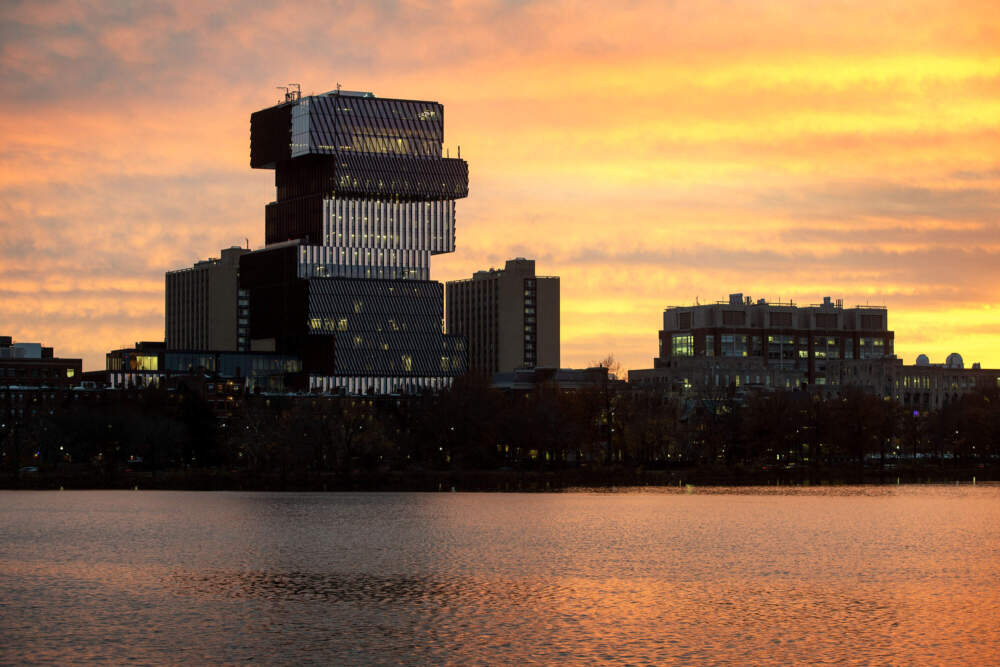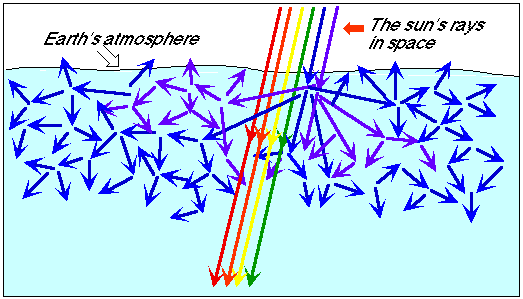Advertisement
The Weekender: Boston's Saturday Morning Newsletter
Why winter sunsets are especially vibrant, explained by a New England meteorologist

Editor's Note: This is an excerpt from WBUR's Saturday morning newsletter, The Weekender. If you like what you read and want it in your inbox, sign up here.
Though it’s been hard to adjust to the past month of earlier nightfall, I can’t say I’m disappointed with the beautiful sunsets that have graced the skies on these colder, clear days — filled with rich, rosy shades of red and pink, swirling with the clouds to create a cosmic smoothie.
Summer sunsets can be lovely. But if you ask me, the colors at play during an autumn or winter sunset are consistently better — and as it turns out, there’s science to back up that opinion.
“Sunsets are more vibrant in winter months,” local meteorologist and weather expert Danielle Noyes told me.
But why? I asked Noyes to help to explain this fascinating scientific phenomenon.
What determines the colors we see in the sky?
Let’s start with the basics. While all the colors of the rainbow exist in sunlight, the color you see when you look up at the sky is determined by a physical process called “Rayleigh scattering.”

The process describes what happens to the waves of sunlight as they come toward us. As they travel through the atmosphere, they’re met by molecules like nitrogen and oxygen and small particles that reflect the light’s rays, causing them to scatter across the sky.
As Noyes explained, “each color has its own wavelength.” That wavelength determines how far a color has to travel before our eyes recognize it. Blue and violet light in particular are reflected by the elements in our atmosphere, which is why we see blue during the day.
But at sunset, as we rotate away from the sun, light has to travel farther — through more of the atmosphere — to reach our eyes.
“Essentially, more atmosphere means more molecules to scatter violets and blues away from your eyes, leaving other colors, like yellow, orange and red,” Noyes said.
The recipe for a perfect winter sunset
So, what makes the sunset especially vibrant in the winter? There are three main factors to consider: The weather, our region here in New England and the positioning of the Earth.
“When it’s cooler out, and less humid, there’s less water vapor in the air,” said Noyes. Fewer particles in the air results in less light being scattered. “In turn, colors can look bolder,” she added.
A storm rolling in can make for a beautiful sunset, too. For example, when a Nor’easter is coming, cirrus clouds often arrive well in advance of the storm itself. “Made up of ice crystals, these clouds certainly decorate the sky and allow for extra vivid sunset displays,” Noyes said.
Additionally, much of the cold, winter air we feel in New England often travels down from Canada or the Arctic, where the air is typically cleaner, said Noyes. “Fresh, clean air results in a crisper sunset.” (The perfect counterexample, of course, being the hazy, red sunsets we experienced this past summer due to some not-so-clean Canadian air.)
Advertisement
“The Earth [also] spins closer to the sun in winter and the sun sets at a sharper angle, making sunset colors last a bit longer than in summer months,” said Noyes. That means a winter sunset lingers on the horizon, giving us more time to enjoy it.
Still, beauty is in the eye of the beholder. Some people may be partial to that hazy summer sunset over the vibrance of winter.
“I have found that there will always be ongoing debates on sunrise and sunset beauty,” said Noyes. “It is, after all, very subjective.”
P.S. — Want to show off your love of WBUR while you’re out enjoying those winter sunsets? Get this WBUR winter hat as thanks for your contribution when you give $5 per month or more. Donate here!
